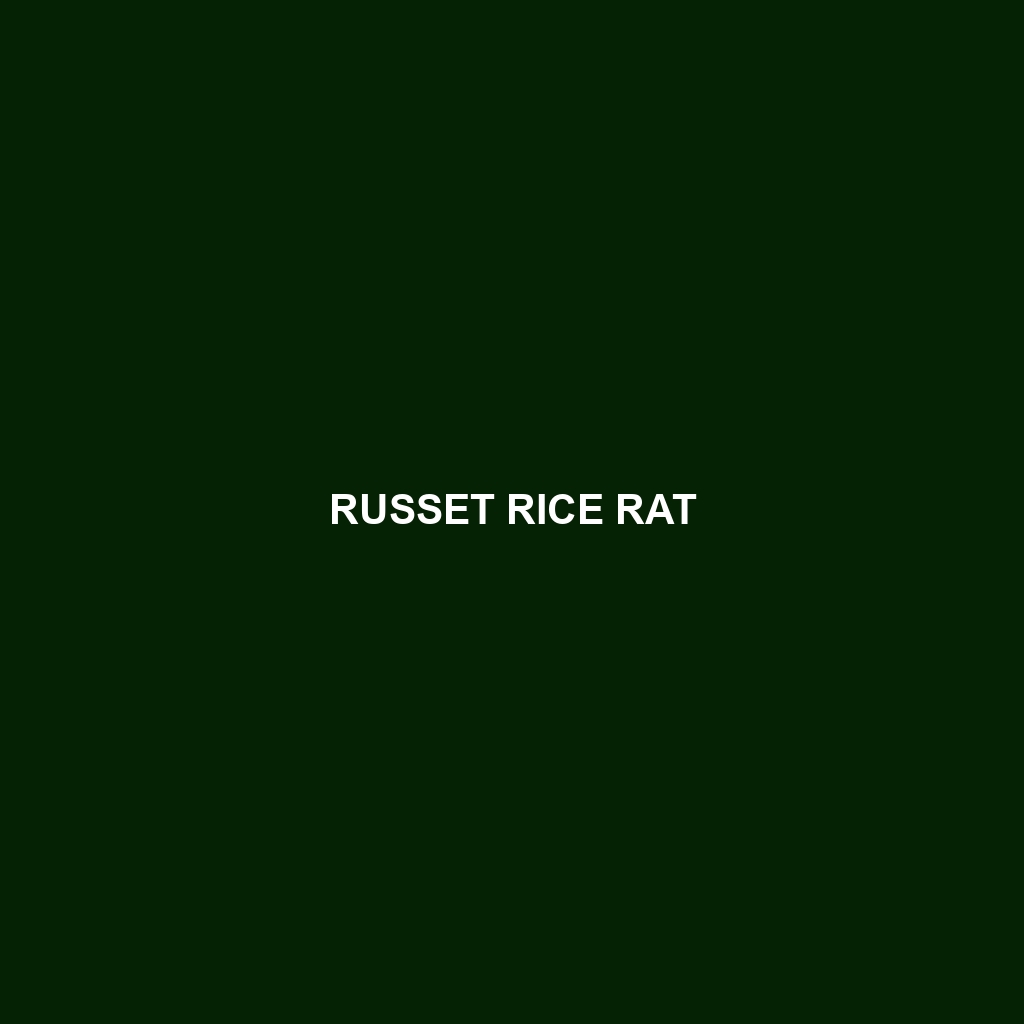Common Name: Russet Rice Rat
Scientific Name: Oryzomys palustris
Habitat:
The Russet Rice Rat is primarily found in the wetlands of the southeastern United States, particularly along the Atlantic coastal plain. This species thrives in environments such as marshes, swamps, and freshwater wetlands, often favoring areas with dense vegetation and proximity to water sources. They are also found in regions of Central America, making their habitat diverse yet specialised.
Physical Characteristics:
The Russet Rice Rat typically measures between 20-28 cm in total length, including a tail that can be as long as its body. Its fur is characterized by a rich russet or reddish-brown color, providing effective camouflage in its natural habitat. Notable physical features include large ears, long whiskers, and a slender, pointed snout. Their body shape is compact and agile, which aids in their movement through dense vegetation.
Behavior:
Russet Rice Rats are primarily nocturnal, with most of their activity occurring during the night. They are known for their excellent swimming abilities and often take to the water when threatened. Socially, they may exhibit both solitary and group behaviors, depending on the availability of resources. Their agility allows them to navigate through their marshy habitats efficiently, making them skilled foragers.
Diet:
The diet of the Russet Rice Rat consists mainly of seeds, grains, and aquatic vegetation. They are opportunistic feeders, often foraging in the mud and water for food sources such as insects, fruits, and even small fish. Their feeding habits contribute to seed dispersal, which is essential for maintaining the health of their ecosystems.
Reproduction:
Russet Rice Rats have a relatively short reproductive cycle, with breeding seasons peaking in warmer months. Females typically give birth to 4-10 pups after a gestation period of approximately 25 to 30 days. Young rats are born blind and hairless and begin to wean by the third week. Parental care is predominantly provided by the mother, with the pups becoming independent after about a month.
Conservation Status:
The Russet Rice Rat is currently listed as Least Concern on the IUCN Red List, though it faces habitat loss due to wetland drainage and agricultural expansion. Maintaining wetland habitats is crucial for ensuring the long-term survival of this species.
Interesting Facts:
One interesting fact about the Russet Rice Rat is its remarkable ability to swim. These rodents can hold their breath for extended periods while traversing through water, which not only aids in escaping predators but also helps them access food sources that are submerged.
Role in Ecosystem:
In their ecosystems, Russet Rice Rats play a vital role as both prey and seed dispersers. They serve as a food source for various predators, including birds of prey and snakes. Additionally, their foraging habits contribute to the health of wetland environments by facilitating plant growth and nutrient cycling.
